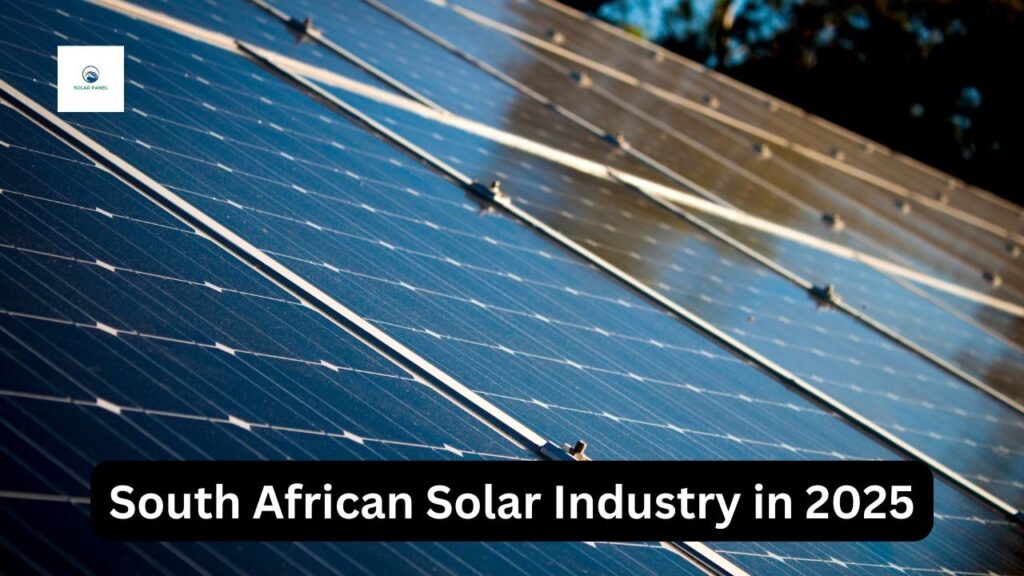As 2024 ends, the South Africa Solar Industry is poised for even greater achievements in 2025. The South African Photovoltaic Industry Association (SAPVIA) highlights a year marked by resilience, growth, and impactful milestones, setting the stage for a sustainable energy future.

Key Growth Milestones in South Africa’s Solar Industry
Private Sector Contributions and Capacity Expansion
In October 2024, South Africa added an impressive 961MW of private-sector solar PV capacity. This achievement underscores the sector’s ability to thrive despite challenges. The total solar PV capacity in the country reached 8.97GW, reflecting an 11.9% increase compared to the previous year.
- Public Procurement Programs: Public procurement initiatives like the Renewable Energy Independent Power Producer Procurement Programme (REIPPPP) contributed 2.8GW.
- Private Sector Contributions: The private sector accounted for 6.1 GW of this capacity, highlighting a strong collaborative effort.
Looking ahead, nearly 500 MW of utility-scale projects are under construction, and an additional 375 MW is expected to be operational by 2025.
Policy Advocacy and Strategic Initiatives
SAPVIA’s advocacy efforts, including contributions to the Integrated Resource Plan (IRP) draft 2023, were pivotal in shaping solar energy growth. Other key initiatives included:
- South African Wholesale Electricity Market (SAWEM): Paving the way for increased solar PV deployment.
- Collaborative Engagements: Working with stakeholders to ensure a supportive regulatory environment.
Economic Impact and Community Development
Job Creation and Skills Development
The solar industry continues to be a vital economic driver in South Africa. SAPVIA’s collaboration with the National Business Initiative (NBI) and Absa led to the training of 100 installation companies to meet growing demand.
Private Sector Innovations
Companies like SOLA have been at the forefront of advancing renewable energy projects in the private sector, ensuring sustainable growth and innovation.
Challenges and Strategic Responses
Regulatory and Financial Barriers
Despite its successes, the solar industry faced several challenges in 2024:
- Regulatory Delays: Prolonged approval processes hindered progress.
- Grid Connection Backlogs: Limited access to grid connections created bottlenecks.
- Financing Issues: Small and medium-sized enterprises (SMEs) struggled with obtaining the necessary funding.
SAPVIA’s Interventions
To address these challenges, SAPVIA:
- Advocated for streamlined regulatory processes with the Department of Mineral Resources and Energy (DMRE) and the National Energy Regulator of South Africa (Nersa).
- Launched a financing initiative to connect SMEs with funding opportunities.
- Fostered partnerships between SMEs and larger companies to share resources and expertise.
Future Trends in South Africa’s Solar Industry
Energy Storage and Microgrids
Energy storage is set to transform the solar sector. Solar plus storage systems are gaining traction to address energy intermittency issues.
- Microgrids: Particularly valuable in rural and remote areas, microgrids will provide reliable energy access.
Rooftop Solar Growth
The adoption of rooftop solar systems for residential and commercial buildings is expected to rise as electricity prices increase and consumers seek alternatives to grid dependence.
Smart Grids and Energy Integration
SAPVIA is collaborating with stakeholders to develop comprehensive grid upgrade plans. These plans focus on integrating smart grids and energy storage systems to support the expansion of renewable energy.
Solar Energy’s Role in South Africa’s Energy Independence
In 2024, solar energy significantly contributed to South Africa’s 300 days of uninterrupted electricity supply, reducing reliance on fossil fuels and lowering carbon emissions.
- Energy Contribution: Solar PV systems generated 5.2TWh of energy, displacing approximately 4,260 tons of CO2 emissions.
- Global Leadership: South Africa’s solar advancements position it as a global leader in renewable energy innovation.
Conclusion
The South African solar industry is not just a beacon of hope for sustainable energy but also a driving force for economic growth and environmental preservation. As 2025 approaches, SAPVIA’s commitment to innovation, collaboration, and advocacy will ensure that every South African has access to affordable, reliable, and clean energy. The future of solar energy in South Africa is bright, and the journey to a sustainable tomorrow is well underway.
FAQs:
What is South Africa’s current solar PV capacity?
As of 2024, South Africa’s total solar PV capacity is 8.97GW.
What are the major contributors to this capacity?
The Renewable Energy Independent Power Producer Procurement Programme (REIPPPP) contributed 2.8GW, while the private sector added 6.1GW.
What challenges does the solar industry face?
Key challenges include regulatory delays, grid connection backlogs, and limited financing options for SMEs.
How is SAPVIA addressing these challenges?
SAPVIA advocates for streamlined processes, launches financing initiatives for SMEs, and fosters partnerships to share resources and expertise.
What is the role of solar energy in South Africa’s energy independence?
Solar energy has significantly reduced reliance on fossil fuels, contributed to 300 days of uninterrupted electricity, and lowered carbon emissions.
